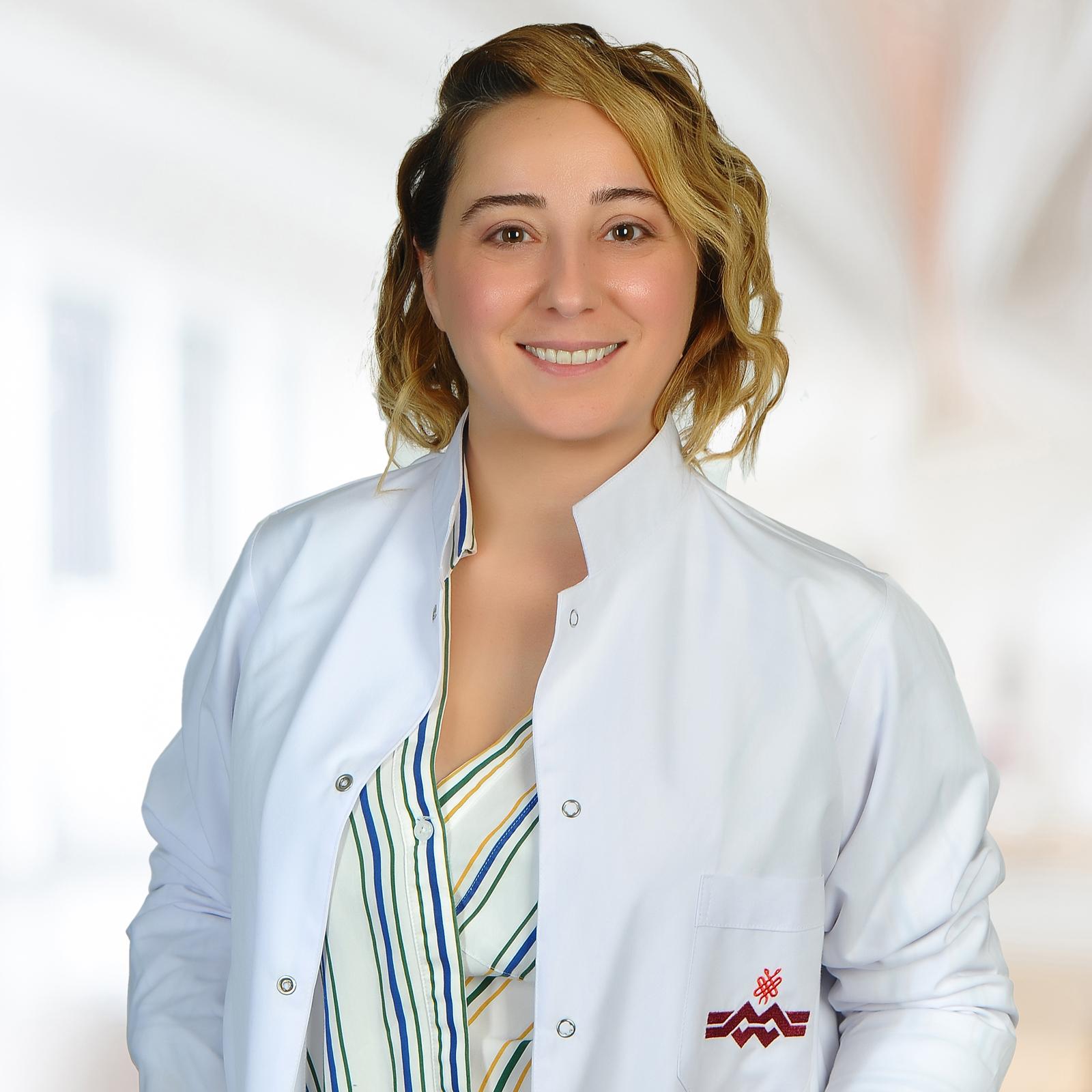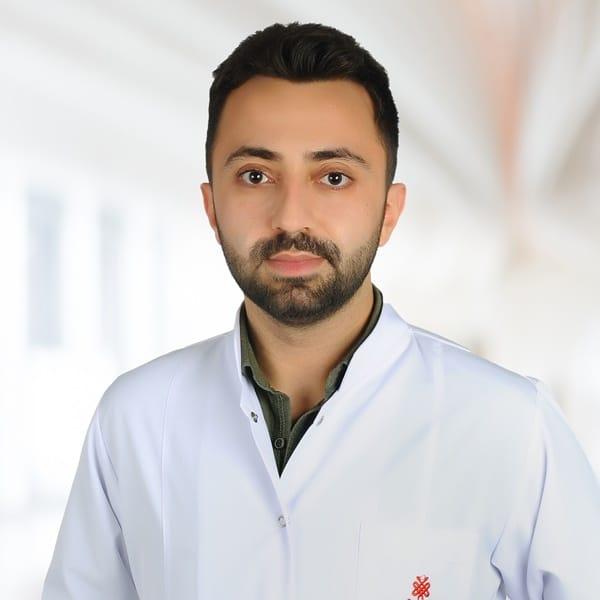Although they do not directly threaten life, diseases affecting the mouth and teeth are among important health problems because they seriously affect the quality of life. For this reason, the treatment of oral and dental diseases must be done. Otherwise, oral and dental diseases can cause many problems from bad breath to external appearance, from severe pain to digestive problems, from heart health to speech disorder. Maltepe University Faculty of Medicine Hospitals Oral and Dental Health Department provides services for all oral and dental diseases within the scope of dentistry. With the help of advanced technology equipment, patients are offered quality and patient-oriented solutions.
Special Dental Treatment Methods Applied for Risky Patients
For patients who have cardiac problems or who are deemed to be at risk in terms of surgery, patients are treated meticulously in the Oral and Dental Health Department of Maltepe University Medical Faculty Hospitals. In this process, where the treatment is undertaken by experienced dentists, comprehensive solutions such as tooth whitening, tooth extraction, toothache, tooth filling, gum bleeding and teeth grinding are offered.
Applications Within the Scope of Oral and Dental Health Department
Maltepe University Faculty of Medicine Hospitals Oral and Dental Health Department's service scope is as follows:
- Prosthetic Dentistry
- Preventive Dentistry
- Aesthetic Dentistry
- Orthodontics
- Teeth whitening
- Total-Partial Prostheses
- Oral-Tooth-Jaw Diseases and Surgery
- Filling and Root Canal Treatment
- Facial Traumas
- Toothache
- Gum Diseases
- Implant
- 20-Year-Old Tooth Treatment
Treatment Process in Preventive Dentistry
The milk teeth line and the next set of mixed teeth develop during the growth period of the children. With the first deciduous tooth that begins to erupt in the 6th month, different groups of deciduous teeth fall from time to time and are replaced by more permanent deciduous teeth. In this period, which lasts until the age of 12, early loss of milk teeth negatively affects the development of the jaw. This can lead to aesthetic and speech disorders.
The treatment of pediatric teeth in the field of pedodontics is a separate branch of dentistry and requires a separate specialist approach. However, the skeletal jaw development of the child during the growth period should also be kept under control by an orthodontist. In Maltepe University Faculty of Medicine Hospitals Department of Oral and Dental Health, precautions are taken to ensure that children have a healthy tooth and mouth structure in their developmental age, and necessary treatments are performed by specialist physicians.
-
How to fight tooth decay?
Another method to increase the resistance of primary teeth to caries is fissure sealant. It means “closing caries-prone areas with topical fluorine”. At the age of 6, the first permanent tooth, the first molar tooth, comes out. Since these are the teeth that stay in the mouth for the longest time and work the most, they must be protected against caries with fissure sealant application, that is, topical fluoride application.
-
What is the importance of taking early precautions for healthy teeth?
Çocukların büyüyüp ilerleyen yaşlarında doyasıya gülümseyebilmesi için diş sağlığında erkenden önlem almak çok önemli. Küçük müdahaleler ileri yaşlarda ağız ve diş sağlığı açısından büyük önem teşkil etmektedir. Burada ebeveynlere büyük sorumluluk düşmektedir. Özellikle 6 yaşına kadar çocukların ağız ve diş sağlığından kendileri sorumludur. Her ebeveyn çocuğuna ağız ve diş sağlığının önemi hakkında gerekli bilgiyi vermesi gerekir.
Aesthetics in Dentistry
In Maltepe University Faculty of Medical Hospitals Oral and Dental Health Department, not only in the treatment of oral and dental health problems; At the same time, solutions are offered in terms of aesthetic appearance. With solutions such as laminate, porcelain veneers, gingival corrections and whitening, patients are provided with a brand new smile.
Services offered within the scope of aesthetic dentistry:
Smile Design:
Before the operation, photographs of the patients who are not satisfied with their smile are taken and transferred to the computer environment. By using cosmetic imaging programs, an idea about what kind of smile the patient will have after the procedure is obtained. Afterwards, the operation is performed at the request of the person.
Laminate Veneers:
This application takes place in 3 stages.
-
First, the smile that the person wants to have is studied, that is, the smile design is carried out. With this computer-assisted application, the most suitable smile shape is selected for the person.
-
In the second stage, the teeth are shaped and models are prepared. These models are tested in the mouth of the person and their suitability is checked.
-
In the third and final stage, the bonding of porcelain veneers, whose color is adjusted, is performed.
Porcelain laminate veneers are very thin porcelain leaves that are adhered to the front surface of the teeth by bonding method. This application can be compared to the nail application application. With this application, which does not require anesthesia, the person will have both whiter teeth and the smile they want.
Whitening Process:
Brushing or calculus cleaning may not always be enough to have white teeth. Such superficial cleaning methods cannot eliminate; The discoloration caused by the structure of the teeth and causing a bad appearance is removed with the teeth whitening method, which provides a permanent cleaning without damaging your teeth.
In teeth whitening application, LED (Light Emiting Diode) light source and special whitening gel are used. With the LED method, which is a high-tech product, the elimination of sensitivity is also quite high. Also, this procedure is painless.
Prosthetic Dentistry and Its Types
Full porcelain crowns without metal support:
Metal-free crowns made of reinforced porcelain have the property of transmitting light, just like natural teeth. In this way, the closest results to natural teeth are obtained with porcelain crowns without metal support.
For natural looking teeth:
Metal porcelain, although well-made, has a dullness and artificiality due to its structure. Full porcelains, on the other hand, are more similar to natural teeth as they have light transmittance. Therefore, full porcelain is preferred for anterior teeth.
Porcelain tooth application that eliminates the risk of allergy:
Full porcelains are attached to the tooth both mechanically and chemically, unlike metal-supported porcelains. In this way, their retention is higher than metal-supported ones, and since there is no metal in their infrastructure, there is no dark line at the gum-crown level. In addition, nickel, etc. allergy risks are not found in full porcelain.
Bridges without metal support:
Bridges without metal support, which are obtained by compressing the reinforced porcelain in special machines, are especially preferred for anterior teeth because of their high light transmittance.
Zirconium-based Bridges without metal support:
The main difference in this system is the infrastructure used. Zirconium, which has a white color, is used instead of metal. In this way, it not only gains high retention but also aesthetically harmonizes with the bridges in the posterior region.
What is Total-Partial Prosthesis? How is it applied?
Total-partial dentures are applied to patients with missing teeth or missing teeth. With the applied prostheses, a natural tooth appearance is obtained and prevents problems that may occur in terms of oral health. Two methods are used for this:
Total prostheses:
It is the method applied to patients who have no teeth in their mouths. In total denture application, acrylic dental prosthesis, also known as “palatal prosthesis” among the people, is used, which can stay in the mouth with vacuum force by taking support from the bone tissue remaining in the lower and upper jaw. It is applied in special health conditions that cannot be implanted. It is difficult to use. It must be renewed every 5 years. In total dentures, plastic teeth are preferred instead of porcelain teeth for health reasons. Since plastic changes in color over time, it should be cleaned with special preparations bought from pharmacies.
Partial Prosthesis:
It is the process of filling the cavities formed by tooth loss. Partial dentures not only contribute to the aesthetic appearance, but also provide the recovery of chewing function that cannot be performed properly due to tooth loss. It helps to eliminate phonetic problems and make the pronunciation smoother.
Partial dentures also contribute to the elimination of collapses and sagging on the face due to lack of teeth. It is a removable prosthesis application that is applied if implant or fixed bridge prosthesis cannot be made in cases where the patient has more than one tooth loss in his mouth.
Orthodontic Treatment
Correction of crooked teeth; It is the section that deals with the elimination of incompatibilities in the teeth, jaw and face. Correction of crooked teeth provides benefits both in terms of aesthetics and in terms of oral and dental health. Elimination of crowding also allows easier and more effective cleaning of teeth. Thus, the person protects himself from caries and gum diseases to some extent. In addition, smooth teeth provide a healthier chewing function. It is important for children to be evaluated by an orthodontist around the age of 7 to avoid confusion.
Steps in orthodontic treatment:
Fixed orthodontic appliances: In this treatment method, metal or porcelain brackets are attached to the teeth. Porcelain brackets do not cause any aesthetic discomfort as they will be tooth-colored.
Removable orthodontic appliances: In this method, which is applied in simpler cases, the patient can insert and remove the appliance himself.
Jaw orthopedics: It is the field of orthodontics that aims to correct the deteriorated relationship between the lower and upper jaws with special appliances worn on the face, especially at young ages. It is usually carried out together with orthopedic treatment and orthodontic treatment.
Orthognathic surgery: It is the application for the correction of congenital, accidental or disease-related disorders of the jaw and face. It is applied in cases that cannot be corrected with orthodontic or orthopedic treatment. This situation, which causes both aesthetic and functional disorders, is corrected by advanced technology and surgical techniques.
Invisalign: This method is a method performed with the use of transparent molds that allow correction of crookedness without the use of brackets in some simple cases. Molds are changed every 2 weeks. The patient needs to wear these patterns, which are unique to him, for about 20 hours a day. An average of 60 pairs of corrective molds are used in each treatment. The duration of treatment is similar to that performed with brackets. Depending on the case, it can take between 6-24 months.
Orthodontics in Adults
There is no age limit for orthodontic treatment. The only requirement is that the bones surrounding the teeth are healthy. With the advancing technology, porcelains can be made in tooth color, so the brackets cannot be noticed. The treatment can vary between 3-30 depending on the age and the problem of the patient.
Fighting Gum Diseases
Gum diseases are defined as diseases that affect the gums and other tissues that support the teeth. The reason for 70% of tooth loss in adults is these gum diseases, also called periodontal. It can be easily treated with early diagnosis. Usually, periodontal diseases begin with gingivitis. This can also be called the early period of periodontal disease. During the gingivitis period, the gums become bleeding, red and large in volume. Although it does not cause much discomfort in the beginning, it can cause irreversible damage to the alveolar bone in the future. Bleeding during tooth brushing is also a symptom of gum disease.
The more advanced stage of periodontal diseases is called periodontitis. At this stage, damage occurs in the alveolar bone along with other tissues that support the teeth. A periodontal pocket is formed between the tooth and the gingiva, which facilitates the progression of the disease with the localization of the infection. As the disease progresses, the teeth become loose and tooth loss occurs. Periodontal disease can progress to advanced stages without any detection. For this reason, it is important to visit the dentist at regular intervals.
How Are Gum Diseases Treated?
Treatment of gum diseases is very important to prevent tooth loss. The treatment consists of cleaning the attachments such as plaque and tartar on the tooth and providing a smooth root surface. With this process, bacteria and irritants that cause inflammation in the gums are removed. Mostly, this treatment is sufficient for the gingiva to shrink, eliminating the pocket and re-adapting it to the tooth. In order for the treatment to be successful, oral care must be done effectively on a daily basis. Surgical treatment may be required for advanced cases. The purpose of the treatment performed here is to clean the calculus in the deep periodontal pockets and to ensure the re-shrinking and elimination of the pocket. Thus, a smooth root surface will be obtained and an easier and cleanable gingival form will be obtained.
The Importance of Regular Control in Gum Diseases
After periodontal treatment, it is very important that the patient is regularly examined by the dentist, plaque control and removal of new tartar deposits from the treated area in order to preserve the gains obtained with the treatment. Effective daily oral care procedures are also essential for a healthy functioning of this process.
Implantology
Implants can be briefly defined as the completion of tooth deficiencies with small titanium pieces placed in the jawbone. These small titanium pieces act as natural tooth roots and are placed in the jawbone with a simple surgical procedure. Since titanium is in perfect harmony with the tissue, the implant placed is surrounded by bone and forms a very solid foundation for the teeth to be made. As in other applications, first of all, measurement and rehearsal stages are done. After the new teeth are ready, your tooth deficiencies are eliminated without damaging your natural teeth.
Implant Application and Outstanding Success
It would be correct to say that the implant application is a very successful application. Implant application does not only eliminate tooth deficiencies, but also eliminates bone loss due to tooth deficiency. Thus, the patient maintains his face shape.
Implant application is usually done in 2 stages. First, the implant is placed in the jawbone. After this procedure, a period of 2-4 months is expected for the implant to be compatible with the jawbone. After this period, when the implants are fixed to the jawbone, small metal parts that will support the permanent prostheses are placed on the implants by opening the tops. In this process, there will be no damage to your natural teeth, and the places of your missing teeth will also be filled. With the implant application, the patient will have a much better speech and chewing function compared to other applications.
Filling
The main cause of tooth decay is that bacterial plaques in the mouth interact with the residues of sugary and floury foods and form acid. These acids lead to the onset of tooth decay by degrading the enamel of the tooth. Stains on the teeth are seen as the first signs of dental caries. The white spots that form show in which part of the tooth enamel there is mineral loss. This is the stage where caries can still be stopped. If no precautions are taken, a hole will form in the area of mineral loss and this will gradually grow. If the carious area is not cleaned, the process progresses to tooth loss. The best bet here would be to cover the caries with a filling after it has been cleaned.
What are the Filling Types?
Porcelain fillings (Inlay / Onlay fillings): These fillings are prepared in laboratories. Therefore, they are much superior in terms of aesthetics and durability. Considering the applied tooth and adjacent teeth, they are much more compatible than composite fillings. porcelain fillings; It is obtained by measuring the remaining intact part after removing the broken, rotten or old filling, and by making it in a special IPS machine according to the models prepared by advanced technologies in the laboratory environment.
Composite fillings: This type of filling is tooth-colored. It is used for bruises, fractures and aesthetic purposes. After it is placed in the prepared cavities layer by layer, it is hardened with a special light. In addition, since they are attached to the tooth with bonding, which is a special adhesive, they do not cause any unnecessary material loss in the tooth. Although they do not last as long as porcelain fillings, they are more economical. Composite fillings may change color with the intense use of substances such as tea, cigarettes and coffee.
Filling without tooth loss: IPS
The fillings with the material that best adapts to the dental tissue in the world are IPS porcelain fillings. The most advanced technology is used in the production of IPS porcelain fillings.
In this application, the tissue of the healthy tooth is not touched. The purpose of applying IPS porcelain fillings is to achieve maximum retention with minimum material loss. Since they are made of compacted special porcelain, there is no need for hardening in the mouth after application. Thanks to this feature, edge leakage is minimized.
Another feature of IPS porcelain fillings is that they are the closest type of filling to the hardness of the natural tooth. At the same time, this type of filling is the most compatible material with the gums. Like other filling types, it neither erodes the teeth nor does it wear itself. IPS porcelain fillings are preferred over other filling types in patients who experience major loss of substance in their teeth.
How make is root treatment?
It is very difficult to replace a healthy tooth. Therefore, although tooth extraction is a cheaper method compared to root canal treatment, the primary goal should be to protect the tooth that can be saved. In addition, a more expensive and difficult treatment method will wait for the patient, considering treatments such as implants and prostheses to be applied to replace the extracted tooth. Therefore, root canal treatment is an important solution. In root canal treatment, the pulp of the tooth is cleaned and the nerves that cause pain are removed.
What is the Purpose of Root Canal Treatment?
The purpose of root canal treatment is to clean the problematic parts of the teeth, which have become so bad that they are lost due to reasons such as caries, and to keep them in the mouth for a longer time. Thus, the material and spiritual process that may occur with tooth loss will be prevented.
The root canal treatment will continue to help the chewing function as it continues to stay in the mouth. It will also prevent the bone in that area from melting.
Problems That May Be Encountered in the Case of Not Performing Root Canal Treatment
In the absence of root canal treatment, the pulp with deep caries and cracks cannot heal itself. This causes the tooth to lose its vitality, and the infection spreads to the entire tooth. In fact, this situation can reach the tissues and cause inflammation in the bone surrounding the tooth. Abscess formed in the cavity causes swelling and pain. Finally, the process ends with the loss of the tooth in a short time.
Root Canal Treatment Application
The duration of the application in root canal treatment may vary between 1-3 sessions depending on the condition of the tooth. During the application, the diseased pulp is removed and the root canals are disinfected. After this process, expansion and shaping are done. Finally, it is tightly filled and covered. In some special cases, drugs are also placed in the pulp chamber and root canals to destroy bacteria.
Oral-Tooth-Jaw Diseases and Surgery
Orthognathic surgery application: In cases where the lower and upper jaws of the patient do not meet each other, correct closure does not occur. In this case, the positions of the teeth are corrected with orthodontics to bring the lower and upper jaws to their normal relations.
Correction of teeth with orthodontics both ensures that the teeth can function in a healthy way and gives the patient an aesthetically beautiful appearance.
Treatment of impacted wisdom teeth: An adult individual should have a total of 32 teeth in his mouth. While those on the front of the teeth, each of which has a separate function, function to cut and shred the food; The teeth on the back allow the food to be grinded and swallowed easily. However, many people only have enough room to fit 28 teeth in their mouth. For this reason, the remaining 4 teeth (20 years old or wisdom teeth) can cause problems for the person.
The danger of impacted wisdom teeth: If the person's gums are healthy, there is no problem in keeping them in the mouth when they are properly applied. But this is often the other way around. The wisdom tooth cannot fully open the gingiva and becomes crooked. Sometimes, they remain impacted by not opening the gums at all. The wisdom tooth remaining in the jawbone looks for different places where it can open the gum and come out. It constantly changes position for this, but cannot find another place. When the gingiva is not fully opened and the wisdom tooth is not fully erupted, bacteria settle in these areas much more easily than normal and cause inflammation immediately. If the tooth is crooked, this time it will apply pressure to the other teeth and disrupt the straight tooth sequence.
The biggest danger that a wisdom tooth will pose is that the cyst and tumor that will form around the tooth will dissolve the jawbone.
Treatment for wisdom teeth:
The most appropriate treatment for wisdom teeth is extraction. Early removal is recommended as it will prevent future problems.
Facial Traumas
Many things can cause facial trauma. Due to many reasons, from motor vehicle accidents to sports injuries, to occupational accidents, the teeth can be displaced and cut inside and outside the mouth; It can occur from simple bone fractures to more complicated jaw fractures. The treatment of these traumas, both physical and mental, can be done by specialist physicians of Maltepe University Medical Faculty Hospitals Department of Oral and Dental Health.













